In contrast therapy, a person will alternate between hot and cold temperatures to promote healing and improve circulation. The temperature range for hot water is typically around 100-110°F (38-43°C), and the temperature range for cold water is around 50-60°F (10-15°C), but it is important for each person to find a temperature range that is comfortable for them. The hot and cold temperatures should be cycled several times to get the full expression of the therapy benefit.
In general contrast bathing can be used as a part of a healthcare routine, especially for individuals who engage in intense physical activity or suffer from chronic pain or inflammation. It can also be used as a post-workout recovery method. Dr. Coplin has used contrast therapy as one part of a larger clinical system of care in the treatment of a variety of conditions ranging from chronic infections, metabolic diseases, autoimmune disease and cancer support. Contrast therapy is a tool to help the body heal, and enhance other treatments one may be doing for their health and wellness. Always consult your physician if you want to include contrast therapy in your program of care.
Contrast therapy can be done in various settings, including at home, in a gym or fitness center, a bathhouse, or in a naturopathic medical or physical therapy clinic.
The easiest form of contrast therapy is the home contrast shower. A contrast shower is, kind of obviously, a shower where you alternate between hot and cold water. To try it, take your normal shower, and do things as you typically would….
By beginning with taking a warm shower you relax the tiny blood vessels in the skin so that more circulation can be brought to the surface. The heat then increases the metabolic rate of the blood and increases the rate of oxygen release.
Then you change your shower to cold water. Gradually turn the water to cold and stand under the cold water for about 30 seconds. Make sure to spray under your arms, your groin, your back, your chest, and your head. The cold water constricts those same tiny vessels and pushes all the metabolically rich blood from your skin back to the deeper organ systems.
After 30 seconds (and you may want to count out loud the first few times) switch back to warm water. Turn the water back to warm and stand under it for about 1-2 minutes until you feel heated up.
Then…. Do it again! Alternate between hot and cold water for several cycles (I typically do 3-5), gradually increasing the time spent under the cold water.
End with cold water and a rigorous towel off until you are dry. It is better than a morning cup of coffee!
Remember to start with shorter cycles of hot and cold water and gradually increase the time as you become more accustomed to the temperature changes. If you have any medical conditions, such as heart disease or circulation problems, it's best to consult your doctor before trying a contrast shower.
To try another version at home you can create your own contrast bath by using two containers, one filled with cold water and another with hot water. Alternate between immersing your affected area (hand, arm, foot, leg, etc.) or whole body (if your container is big enough) in the hot and cold water for several minutes at a time, repeating the cycle several times. Typically try the hot water for 5 mins and the cold water for 1 minute. There is no set or best temperature for the two waters, but start slowly with warm water and cool water, and you can slowly increase/decrease the temperatures until you find your optimal contrast range.
To try at a gym or fitness center first get a sense of what options your facility has. Many gyms or fitness centers offer cold plunge pools, hot tubs, and saunas that can be used for contrast therapy. If there is not a cold plunge use the sauna or hot tub (or even a hot shower in a pinch) for your hot phase, and do your cold phase in the shower like we do at home.
Certain naturopathic medical clinics have specialists, like Dr. Coplin, who use aspects of contrast therapy along with a larger system of biophysical therapy for the treatment of a variety of complex and chronic conditions, but also to treat everyday concerns, aches and pains, urgent care, and cold and flus.
Physical therapy clinics often use contrast therapy for specific medical conditions or injury rehabilitation. They can tailor the therapy to your individual needs and monitor your progress.
In general contrast bathing can be used as a part of a healthcare routine, especially for individuals who engage in intense physical activity or suffer from chronic pain or inflammation. It can also be used as a post-workout recovery method.
Bathhouses typically offer a variety of hydrothermal facilities, such as saunas, steam rooms, hot tubs, and cold plunge pools, that can be used for contrast therapy. However, not all bathhouses may have the specific temperature range required for effective contrast therapy.
Some bathhouses may have saunas or hot tubs with temperatures in the range of 100-110°F, which can be used for the hot phase of contrast therapy. They may also have cold plunge pools or cold showers that can be used for the cold phase of therapy.
